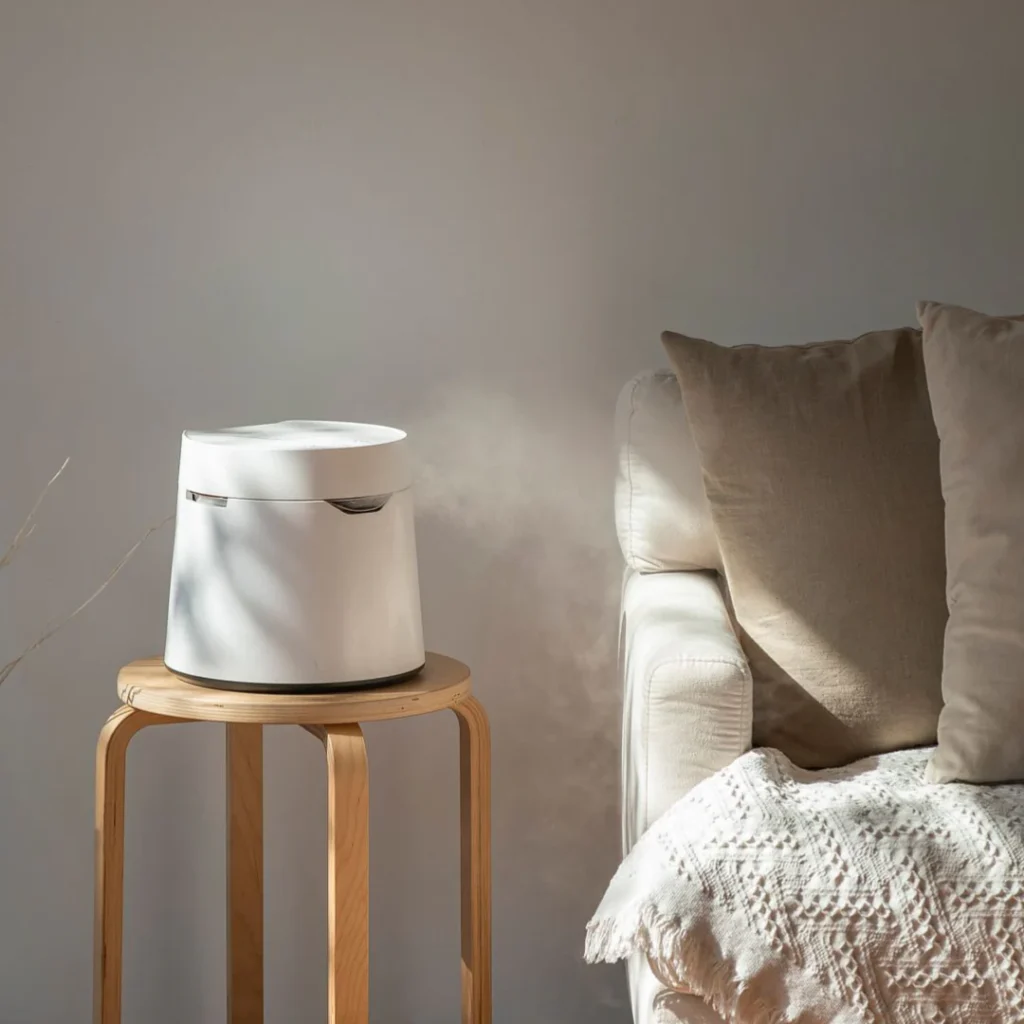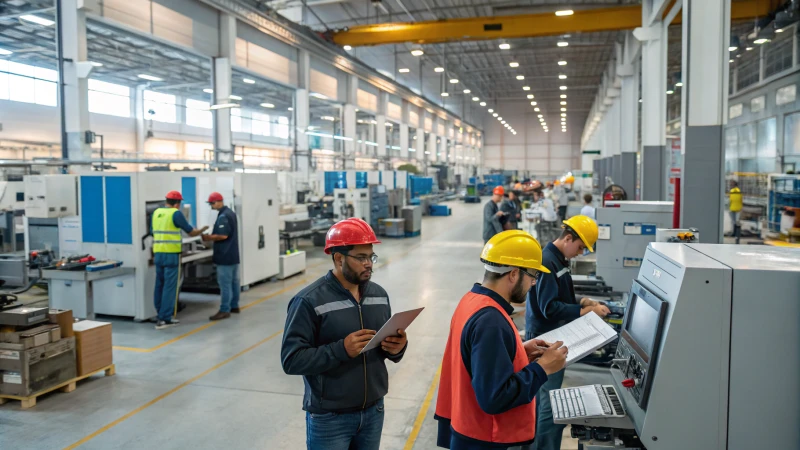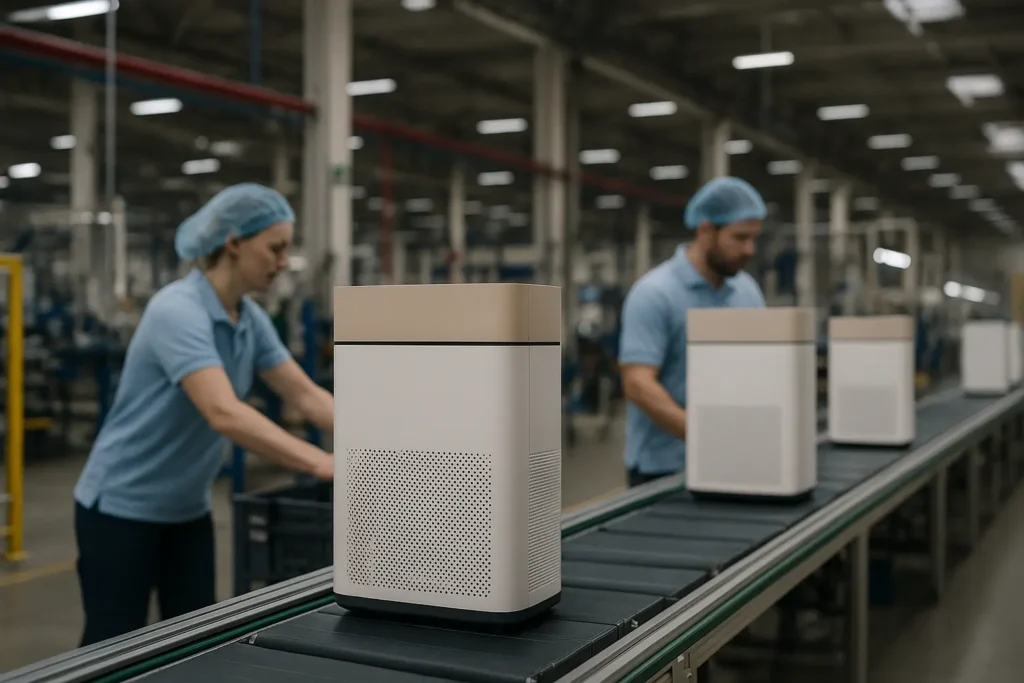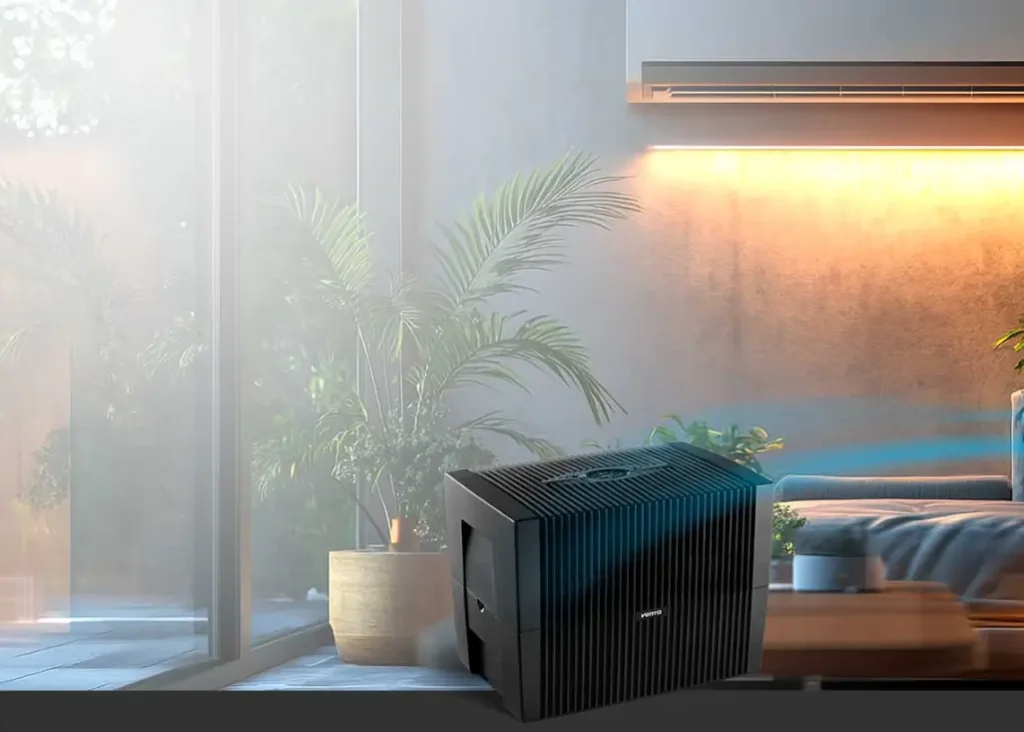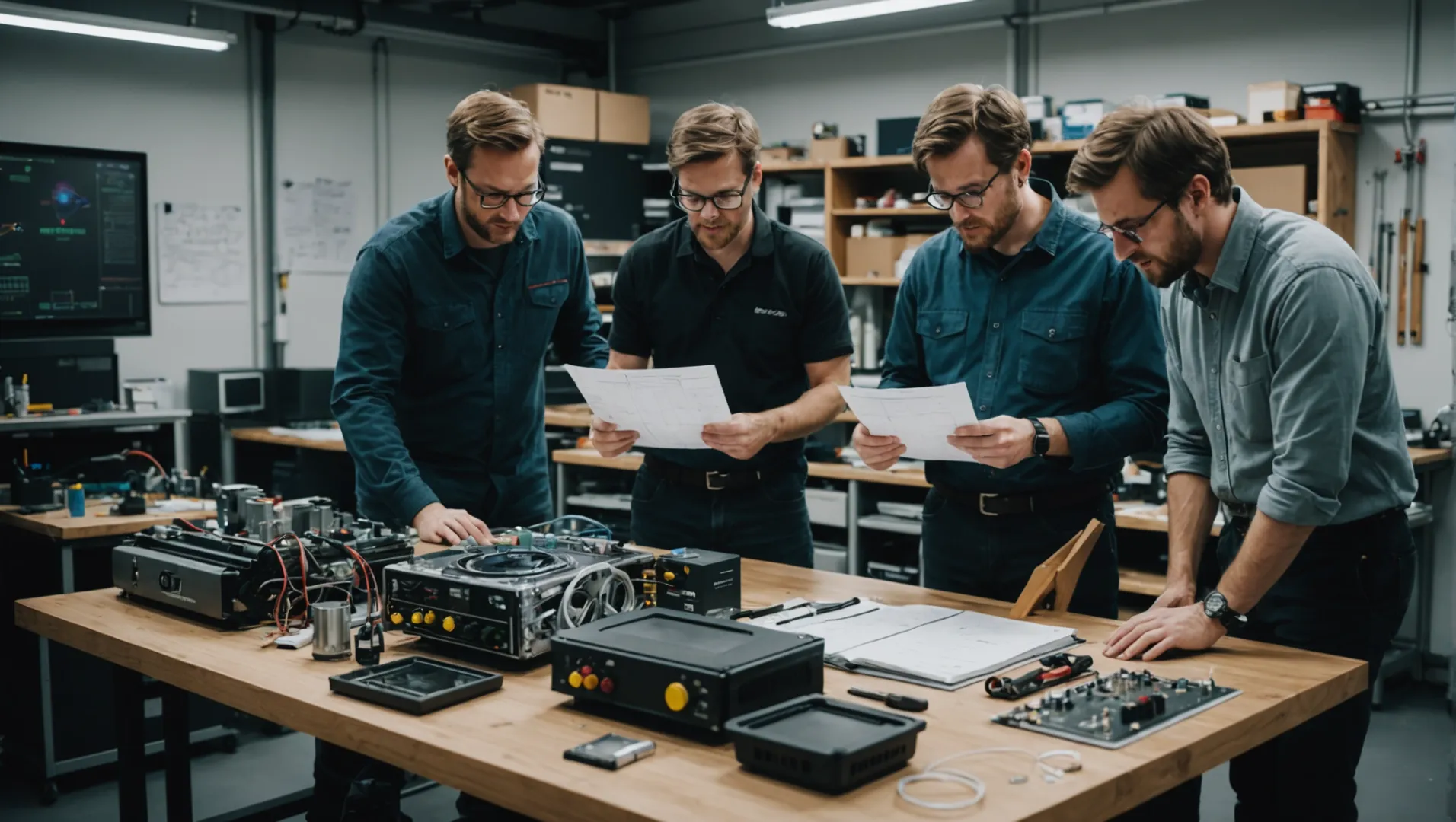
Dans le monde compétitif du développement des purificateurs d'air, la création d'un produit performant ne se résume pas à une bonne idée.
Les prototypes sont essentiels dans le développement des purificateurs d'air car ils permettent de tester des paramètres de performance tels que CADRIls fournissent également des informations précieuses sur le marché, contribuent à la gestion des coûts et permettent d'évaluer les capacités des fournisseurs. Ils fournissent également des informations précieuses sur le marché, contribuent à la gestion des coûts et permettent d'évaluer les capacités des fournisseurs.
Si les prototypes offrent un aperçu immédiat des performances et de la conception, leur influence s'étend au-delà du domaine technique. Comprendre les implications plus larges des tests de prototypes peut améliorer de manière significative l'innovation des produits et la préparation du marché. Voyons comment les prototypes influencent toutes les facettes du développement d'un purificateur d'air.
Les prototypes permettent de réduire les coûts de développement des purificateurs d'air.Vrai
Les prototypes permettent d'identifier les possibilités de réduction des coûts en affinant les conceptions à un stade précoce, ce qui réduit les dépenses de production.
Quelles sont les principales mesures de performance évaluées lors du prototypage de purificateurs d'air ?
Les tests de prototypes sont essentiels pour s'assurer que les purificateurs d'air répondent à des normes de performance élevées.
Les principales mesures de performance dans le prototypage de purificateurs d'air sont les suivantes CADRL'évaluation de ces éléments permet de garantir l'efficacité de l'appareil et son aptitude à être commercialisé. L'évaluation de ces éléments garantit l'efficacité, l'efficience et l'aptitude à la commercialisation de l'appareil.

Taux de distribution d'air pur (CADR)
CADR est une mesure essentielle qui indique le volume d'air pur qu'un purificateur d'air peut fournir par minute. Il mesure la capacité de l'appareil à filtrer la fumée, le pollen et la poussière, fournissant ainsi une évaluation complète de ses performances. Un taux d'efficacité CADR signifie une meilleure efficacité de la purification de l'air, ce qui en fait un facteur critique dans le prototypage.
Débit d'air
Le débit d'air correspond à la quantité d'air que le purificateur peut faire circuler dans une pièce dans un laps de temps donné. Il est essentiel de veiller à ce que le débit d'air corresponde à la taille de la pièce pour obtenir des performances optimales. Lors du prototypage, l'ajustement des paramètres de débit d'air permet d'équilibrer la vitesse de purification et l'efficacité énergétique, contribuant ainsi à l'efficacité globale de l'appareil.
Taille et portabilité
Les dimensions physiques d'un purificateur d'air influent sur sa facilité d'utilisation et son attrait commercial. Lors du prototypage, il est important d'évaluer si la taille correspond aux attentes des consommateurs. Un modèle compact peut convenir aux espaces personnels, tandis que des unités plus grandes peuvent être idéales pour un usage industriel. Il est essentiel d'équilibrer la taille et les performances pour répondre aux divers besoins des consommateurs.
Niveaux de bruit
L'évaluation du niveau de bruit est essentielle pour assurer le confort de l'utilisateur, en particulier dans les environnements domestiques et de bureau. Le prototypage permet aux développeurs de tester différentes vitesses de ventilateur et d'apporter des modifications à la conception afin de minimiser le bruit sans sacrifier les performances. Des niveaux de bruit plus faibles peuvent améliorer la satisfaction des utilisateurs et élargir l'attrait du marché.
La rentabilité grâce au prototypage
Les prototypes permettent non seulement de tester les paramètres techniques, mais aussi d'affiner les stratégies de coûts. En comprenant les Nomenclature1Grâce à cette étape, les fabricants peuvent optimiser les coûts de production sans compromettre la qualité. Cette étape permet de s'assurer que les mesures de performance et de rentabilité sont intégrées dans la conception finale du produit.
Un CADR plus élevé indique une meilleure efficacité de purification de l'air.Vrai
Le CADR mesure le volume d'air pur délivré par minute, plus il est élevé, mieux c'est.
Les niveaux de bruit ne sont pas pris en compte dans le prototypage des purificateurs d'air.Faux
Les niveaux de bruit sont cruciaux pour le confort de l'utilisateur, testé lors du prototypage.
Comment les prototypes peuvent-ils influencer la gestion des coûts dans le développement des purificateurs d'air ?
Les prototypes jouent un rôle essentiel dans la gestion des coûts au cours du développement des purificateurs d'air.
En facilitant les premiers essais de conception et de fonctionnement, les prototypes permettent d'identifier les possibilités de réduction des coûts, d'optimiser l'affectation des ressources et de réduire les risques financiers liés à la production de masse.
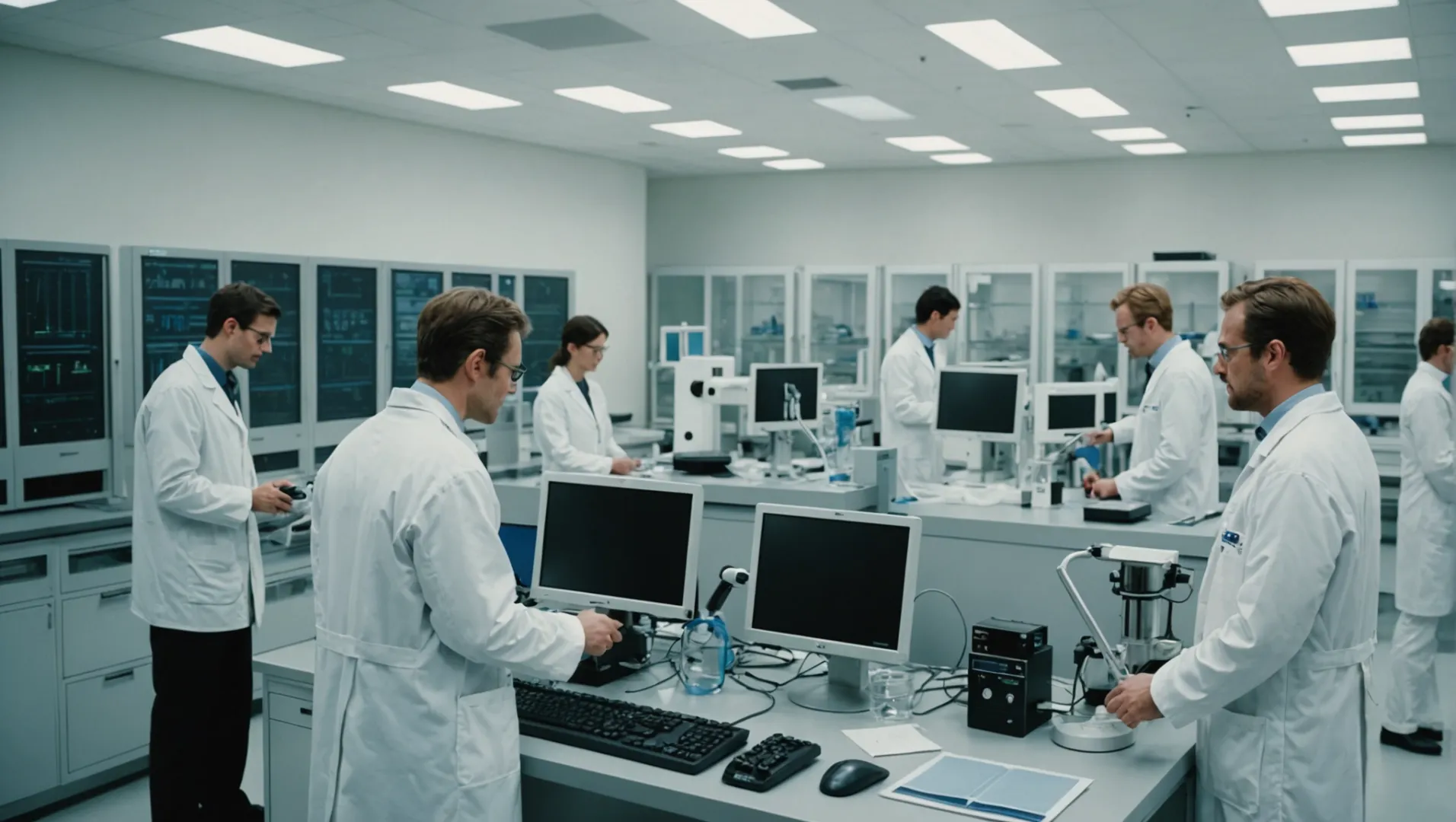
Les prototypes comme outil d'analyse des coûts
Le développement d'un purificateur d'air est une entreprise coûteuse, où chaque décision peut avoir un impact significatif sur le budget global. En utilisant des prototypes, les développeurs peuvent tester et affiner leurs produits. indicateurs de performance clés2 comme CADR (Clean Air Delivery Rate), le débit d'air et les niveaux de bruit avant de s'engager dans des outils de production coûteux. Des essais précoces permettent de repérer les domaines où les coûts peuvent être réduits sans compromettre la qualité.
Par exemple, si un prototype révèle qu'un élément de conception particulier entraîne un bruit excessif, les ingénieurs peuvent expérimenter d'autres matériaux ou des modifications structurelles pour obtenir les performances souhaitées à moindre coût. Ces informations sont précieuses pour créer un produit final plus rentable.
Retour d'information sur le marché et gestion des coûts
Les prototypes fonctionnels jouent également un rôle crucial dans la phase initiale de commercialisation en attirant des clients potentiels. Les premières réactions du marché aident les développeurs à prendre des décisions éclairées sur les caractéristiques à privilégier ou à éliminer, ce qui permet de rationaliser le processus de conception et de développement du produit. Cette boucle de rétroaction peut réduire les investissements ultérieurs dans l'outillage, qui sont notoirement coûteux dans la fabrication des purificateurs d'air.
Prenons l'exemple d'un scénario dans lequel le retour d'information des clients suggère qu'une certaine fonctionnalité est moins critique. Les développeurs peuvent alors décider d'allouer des ressources ailleurs, optimisant ainsi la stratégie de gestion des coûts.
| Avantages du prototype | Implications en termes de coûts |
|---|---|
| Essais préliminaires de performance | Réduire les dépenses imprévues dans la production |
| Retour d'information sur le marché | Optimiser la hiérarchisation des fonctionnalités |
| Évaluation des fournisseurs | Garantir la rentabilité à long terme |
Évaluation des fournisseurs par le biais du prototypage
Le prototypage sert de référence pour évaluer la fiabilité et la capacité de développement des fournisseurs. Si un fournisseur peine à livrer un prototype conforme aux spécifications de conception, cela peut indiquer des problèmes potentiels pour les futures séries de production. Il est essentiel de choisir le bon fournisseur, car changer de fournisseur après l'outillage peut entraîner des coûts d'opportunité considérables.
En évaluant la capacité d'un fournisseur à produire un prototype fonctionnel, les développeurs peuvent juger de sa viabilité à long terme en tant que partenaire. Cette évaluation permet d'atténuer les risques et de s'assurer que le fournisseur choisi peut gérer efficacement les coûts tout en maintenant la qualité.
Accélérer les délais de développement
Un avantage moins connu du prototypage est sa capacité à accélérer le calendrier de développement global, ce qui influe intrinsèquement sur la gestion des coûts. Les fournisseurs utilisent souvent des prototypes fonctionnels pour tester des processus tels que CNC l'usinage ou UL/ETL ce qui permet de gagner plusieurs semaines sur les délais de lancement des produits.
En raccourcissant ces délais, les entreprises peuvent mettre leurs produits sur le marché plus rapidement, en minimisant les coûts de possession et en maximisant le potentiel de revenus des ventes précoces. Par exemple, une réduction du temps de développement de 4 à 8 semaines peut entraîner des économies substantielles en termes de frais généraux et offrir un avantage concurrentiel sur le marché.
Les prototypes réduisent les coûts de production des purificateurs d'air.Vrai
Les prototypes permettent d'identifier les possibilités de réduction des coûts et de minimiser les risques financiers.
Sauter les prototypes accélère le développement des purificateurs d'air.Faux
Le prototypage permet d'accélérer les délais en affinant les conceptions dès le début.
Pourquoi l'évaluation des fournisseurs est-elle essentielle lors des essais de prototypes ?
L'évaluation des fournisseurs lors des essais de prototypes peut faire la différence entre le succès et l'échec de votre produit.
L'évaluation des fournisseurs au cours des essais de prototypes garantit la fiabilité, la capacité et la gestion des coûts, préservant ainsi la réussite du projet.
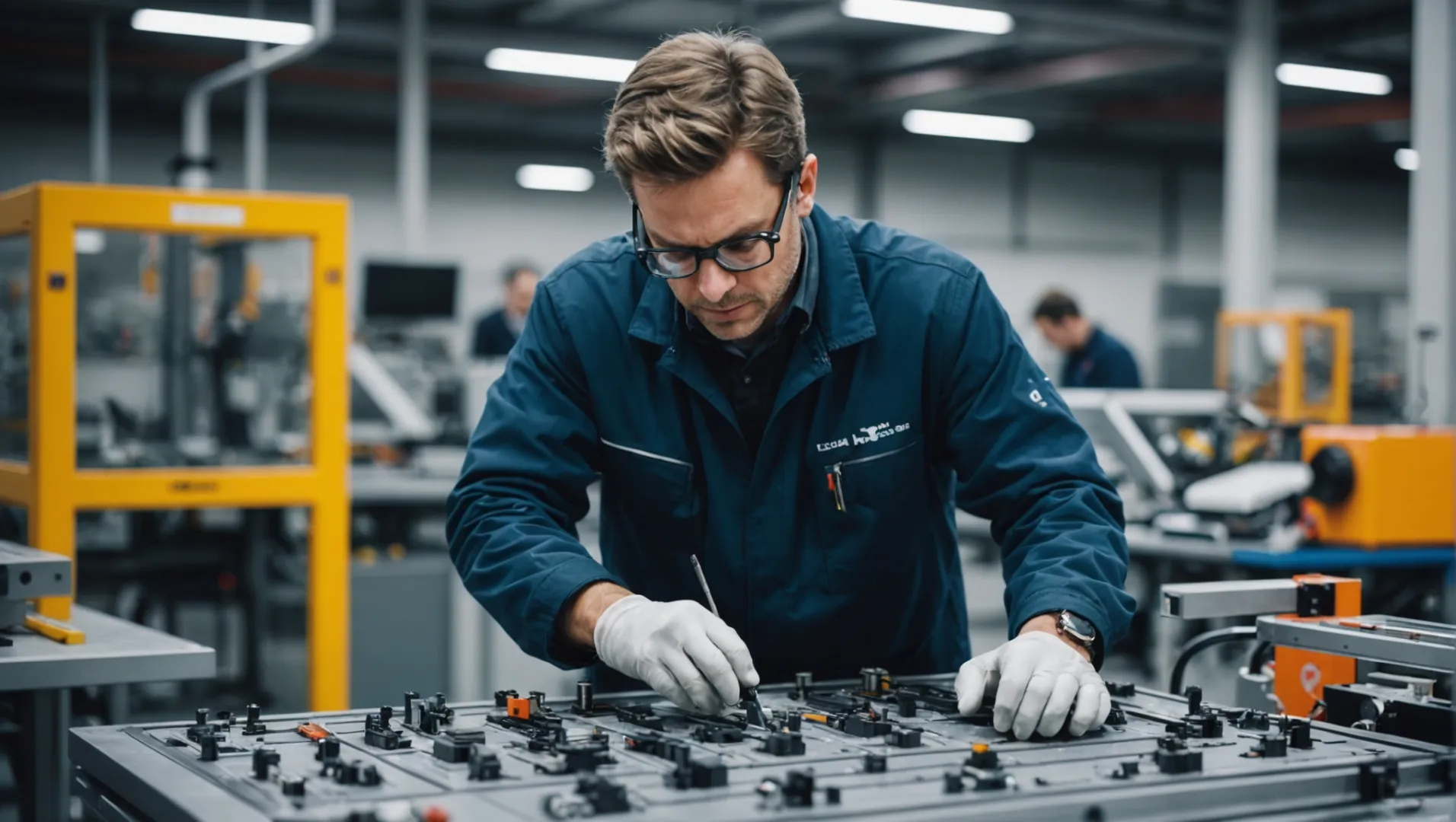
Évaluation de la fiabilité et de la capacité des fournisseurs
Lors du développement d'un prototype, la fiabilité et la capacité d'un fournisseur sont mises à l'épreuve. A capacité du fournisseur3 La capacité d'un fournisseur à gérer des conceptions complexes et compliquées est essentielle. Si un fournisseur éprouve des difficultés avec un prototype difficile, cela indique des problèmes potentiels quant à sa capacité à prendre en charge la production à grande échelle. Changer de fournisseur après l'outillage peut entraîner des coûts d'opportunité importants et des retards dans le projet.
Importance de l'analyse des coûts
La gestion des coûts est un aspect essentiel de tout nouveau projet. Lors des essais de prototypes, les fournisseurs fournissent une nomenclature (BOM), qui est essentielle pour déterminer le prix unitaire. Cette analyse précoce des coûts permet aux entreprises de gérer efficacement les coûts des fournisseurs, en veillant à ce que le produit réponde aux objectifs de prix de détail et reste compétitif sur le marché.
| Aspect | Considérations |
|---|---|
| BOM Précision | S'assurer que le fournisseur fournit des nomenclatures détaillées |
| Objectif de prix de détail | Aligner BOM les coûts des stratégies de prix de détail |
Accélérer les délais de développement
Un fournisseur compétent peut accélérer le processus de développement en effectuant des tests fonctionnels et en fournissant CNC prototypes pour des certifications telles que UL ou ETL. Cela peut potentiellement réduire le délai de 4 à 8 semaines, ce qui donne un avantage concurrentiel sur des marchés qui évoluent rapidement. Le choix d'un fournisseur capable de prendre en charge ces processus de manière efficace est donc crucial pour une entrée rapide sur le marché.
Potentiel de partenariat à long terme
Les essais de prototypes ne répondent pas seulement aux besoins immédiats du projet, mais permettent également d'évaluer si un fournisseur peut être un partenaire à long terme. Des performances constantes, une flexibilité dans la gestion des défis imprévus et une communication transparente pendant les phases de prototypage reflètent le potentiel d'un fournisseur pour une collaboration à long terme.
En résumé, l'évaluation des fournisseurs au cours des essais de prototypes est essentielle pour garantir que le processus de développement des produits se déroule sans heurts, de manière rentable et dans les délais, ce qui ouvre la voie à de futurs partenariats et à la réussite commerciale.
Le changement de fournisseur après la mise en place de l'outillage augmente les coûts d'opportunité.Vrai
Changer de fournisseur après l'outillage peut retarder les projets et entraîner des coûts supplémentaires.
La précision des nomenclatures n'est pas pertinente pour les stratégies de prix de détail.Faux
Des nomenclatures précises sont essentielles pour aligner les coûts sur les prix de détail.
Comment les essais de prototypes accélèrent-ils le lancement du marché des purificateurs d'air ?
Les essais de prototypes sont essentiels pour réduire le délai de mise sur le marché des purificateurs d'air en optimisant la conception et la fonction dès le début.
Les essais de prototypes accélèrent le lancement des purificateurs d'air sur le marché en affinant la conception, en validant les performances et en recueillant les premiers commentaires du marché, ce qui réduit les révisions fastidieuses.
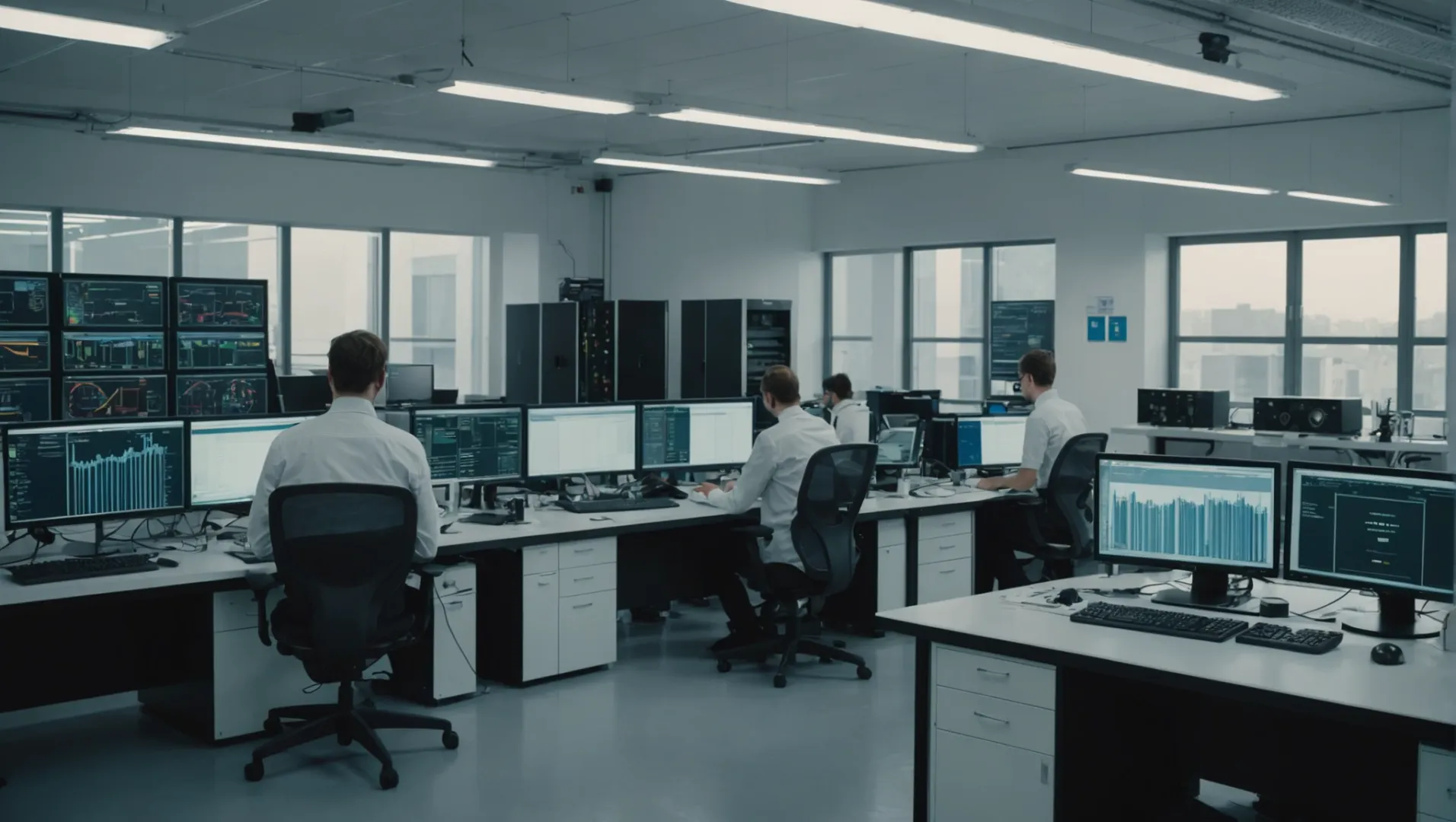
Affiner la conception et la fonctionnalité
L'une des principales façons dont les essais de prototypes accélèrent le lancement sur le marché est de permettre aux équipes d'identifier et de résoudre les défauts de conception avant la production à grande échelle. En examinant les des mesures de performance essentielles4 tels que le taux de distribution d'air pur (CADR), le débit d'air et les niveaux de bruit, les développeurs peuvent procéder aux ajustements nécessaires dès le début du processus. Cette approche proactive permet d'éviter des reconceptions coûteuses par la suite.
Obtenir un retour d'information précoce du marché
Les prototypes fonctionnels constituent un outil précieux pour recueillir les premières réactions du marché. Les entreprises peuvent présenter ces prototypes à des clients potentiels afin d'évaluer leurs réactions. Cette stratégie permet non seulement de comprendre les besoins des consommateurs, mais aussi d'obtenir des informations essentielles pour affiner les stratégies de marketing.
Rationalisation de la gestion des coûts
La création d'un prototype permet aux fabricants d'élaborer une nomenclature (BOM) qui est essentielle pour l'analyse des coûts. Cette étape permet de fixer un prix de détail réaliste qui s'aligne sur les prix de la concurrence tout en garantissant la rentabilité. En outre, l'utilisation d'un prototype fonctionnel5Les entreprises peuvent ainsi prendre des décisions éclairées concernant les investissements en outillage, qui sont généralement élevés pour les purificateurs d'air.
Évaluer la fiabilité des fournisseurs
Les essais de prototypes peuvent contribuer à évaluer les capacités des fournisseurs potentiels. Si un fournisseur peine à fournir un prototype de haute qualité, cela peut indiquer des problèmes potentiels dans la production de masse, ce qui incite les entreprises à reconsidérer leurs choix de fournisseurs. Ce processus d'évaluation permet d'atténuer les risques liés à la fiabilité des fournisseurs.
Accélérer les processus de certification
Les prototypes peuvent être utilisés pour des tests de certification préliminaires, tels que UL ou ETL des tests, ce qui permet d'identifier rapidement les problèmes de conformité. Cette pratique permet de gagner des semaines sur le calendrier global de développement, ce qui garantit un lancement plus rapide sur le marché.
En tirant parti de ces stratégies, les essais de prototypes raccourcissent efficacement le chemin entre le concept et le lancement du produit, améliorant ainsi la compétitivité des purificateurs d'air sur le marché.
Les essais de prototypes réduisent les coûts de reconception des purificateurs d'air.Vrai
L'identification précoce des défauts de conception permet d'éviter des révisions coûteuses par la suite.
Les prototypes de purificateurs d'air ne peuvent pas être utilisés pour les tests de certification.Faux
Les prototypes sont utilisés pour les tests de certification préliminaires afin de gagner du temps.
Conclusion
Les prototypes sont indispensables pour garantir le succès des purificateurs d'air en affinant la conception et la fonctionnalité, en facilitant l'entrée sur le marché et en optimisant les coûts. Adoptez le prototypage pour améliorer votre stratégie de développement de produits et vous assurer un avantage concurrentiel.
-
Comprendre l'impact de la nomenclature sur la rentabilité de la conception d'un produit.. : Une nomenclature est une liste exhaustive des matières premières, des composants et des instructions nécessaires à la construction, à la fabrication ou à la réparation d'un produit ou d'un service. ↩
-
Découvrez les mesures cruciales qui guident les décisions de conception des purificateurs d'air.. : Notre prototype permet d'afficher la qualité de l'air ainsi que les indicateurs clés de performance (ICP) pertinents sous une forme traitée. Avec les bons ... ↩
-
Apprenez à évaluer efficacement les capacités de votre fournisseur.. : Accordez une attention particulière à la qualité, à la capacité, aux risques, aux coûts et aux prix, c'est-à-dire aux cinq facteurs clés à prendre en considération lors de l'évaluation d'un nouveau fournisseur ou d'un fournisseur existant. ↩
-
Découvrez quels sont les paramètres essentiels à l'évaluation d'un prototype.. : L'efficacité d'un purificateur d'air dépend de trois indicateurs de performance clés : l'efficacité du filtre, le débit d'air et la configuration du flux d'air. ↩
-
Découvrez pourquoi les prototypes fonctionnels sont essentiels pour une production rentable.. : Les prototypes fonctionnels permettent d'identifier et d'atténuer les risques dès le début du processus de développement, réduisant ainsi la probabilité d'erreurs coûteuses ou ... ↩



